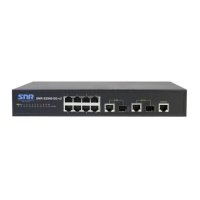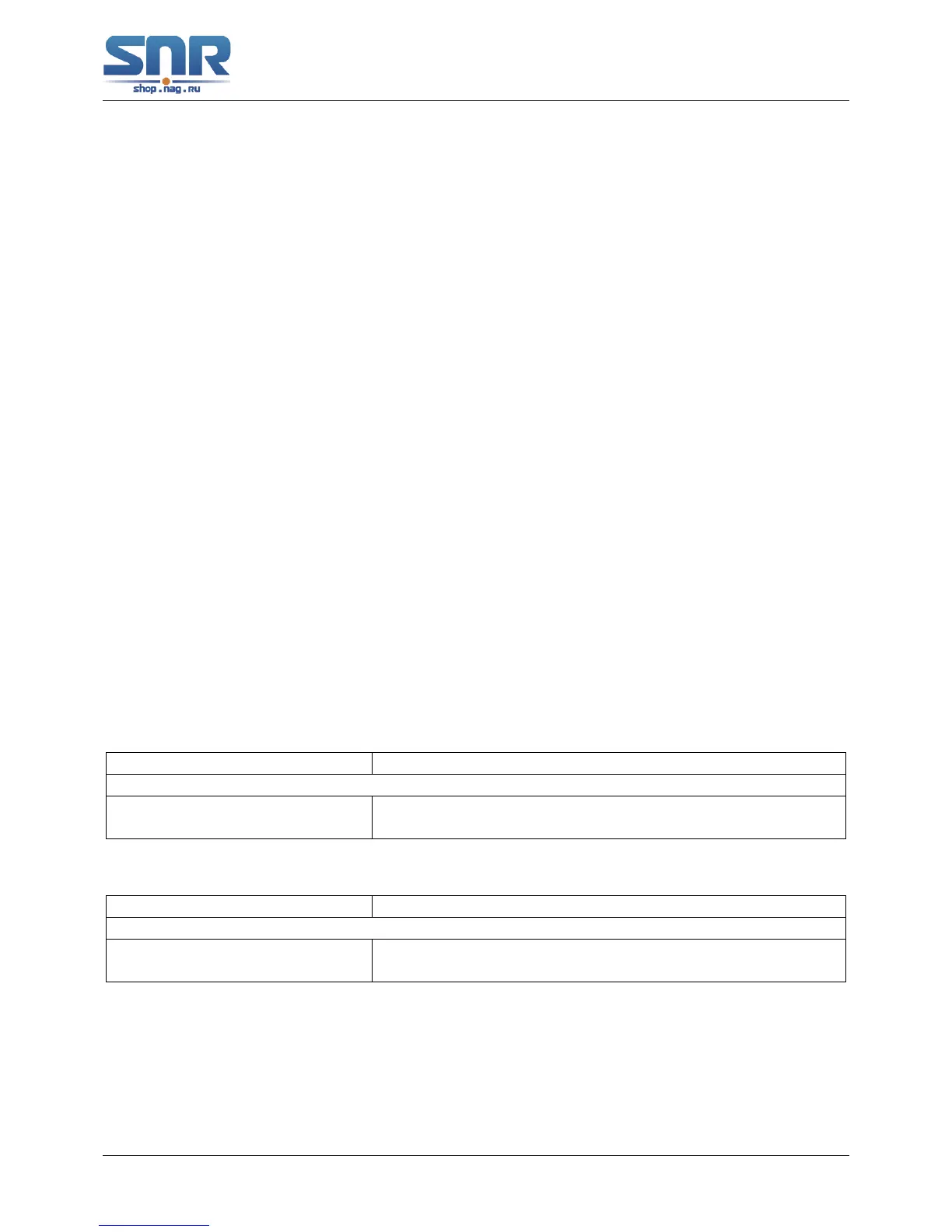SNR S2940-8G-v2 Switch Configuration Guide
Dot1q-tunnel Configuration
identical to the one sent by CE1. For the user, the role the operator network plays between PE1
and PE2, is to provide a reliable layer-2 link.
The technology of Dot1q-tuunel provides the ISP internet the ability of supporting many client
VLANs by only one VLAN of theirselves. Both the ISP internet and the clients can configure their
own VLAN independently.
It is obvious that, the dot1q-tunnel function has got following characteristics:
• Applicable through simple static configuration, no complex configuration or maintenance to
be needed.
• Operators will only have to assign one SPVID for each user, which increases the number of
concurrent supportable users; while the users has got the ultimate freedom in selecting and
managing the VLAN IDs (select within 1~4096 at user's will).
• The user network is considerably independent. When the ISP internet is upgrading their
network, the user networks do not have to change their original configuration.
Detailed description on the application and configuration of dot1q-tunnel will be provided in this
section.
17.2 Dot1q-tunnel Configuration
Configuration Task Sequence of Dot1q-Tunnel:
1. Configure the dot1q-tunnel function on port
2. Configure the protocol type (TPID) on port
1. Configure the dot1q-tunnel function on port
Command Explanation
Port mode
dot1q-tunnel enable Enter/exit the dot1q-tunnel mode on the port.
no dot1q-tunnel enable
2. Configure the protocol type (TPID) on port
Command Explanation
Port mode
dot1q-tunnel tpid { 0x8100 |
0x9100 | 0x9200 | <1-65535> }
Configure the protocol type on TRUNK port.
17.3 Typical Applications of the Dot1q-tunnel
Scenario:
Edge switch PE1 and PE2 of the ISP internet forward the VLAN200~300 data between CE1 and
CE2 of the client network with VLAN3. The port1 of PE1 is connected to CE1, port10 is connected
132

